|
Milk and Osteoporosis
Milk and osteoporosis naturally go together because milk helps to prevent osteoporosis - or so you have been told. Told by who? By a lot of clever marketers from the dairy and pharmaceutical industries. But what are the facts? What does science say? What is best advice regarding milk?
See some surprising
facts about dairy
and scientific quotes that will make you wipe that white mustache from your upper lip. The best scientific advice now is against the use of milk. Read quotes from various experts including Dr. Frank Oski, former Head of Pediatrics at Johns Hopkins University and author of "Don't Drink your Milk." (pictured here).
Here are three easily-observed clues which suggest there is a problem with the common association made between milk and osteoporosis.
1. Cows To help realize that the problem is not lack of dairy milk, think about cows for a moment. From where do they get the calcium needed to make large, strong bones? Not from dairy (except as young calves) and not from calcium supplements. They eat grass which is comparatively low in calcium and high in magnesium.
2. Traditional Eskimos They have a diet (mostly from animal sources) high in calcium (over 2,000 mg a day) but they also have the world's highest hip-fracture rate. Clearly, just having lots of calcium from milk or any other source does not guarantee strong bones.
3. Hip Fracture Rates This rate is a good indicator of the health of a population's bones. In countries with the highest dairy consumption such as Norway, Sweden, and the United States the number of hip fractures is 50 times greater than such countries as New Guinea and South Africa which have extremely low consumption of dairy and other animal products. This was shown in one study by a Harvard researcher (Hegsted D.M. Calcium and Osteoporosis. J Nutr 986;116(11);2316-9) that produced this graph showing a direct relationship between calcium intake and hip fractures (by country).
The Scientific Facts
There have been many studies showing that milk consumption does not help to prevent osteoporosis. A study of 78,000 nurses found that those who drank more than one glass of milk per day had a 45% higher hip fracture rate than those who drank much less milk. (Feskanich D. et al. Milk, dietary calcium, and bone fractures in women: a 12-year prospective study. Am J Public Health 1997;87(6);992-7.)
The truth is that we actually need very little calcium to maintain healthy bones. The problem is not lack of calcium intake but other factors that affect our body's ability to utilize that calcium and that also cause our bodies to lose calcium from the bones.
Misinformation
One account I read said "One cause of osteoporosis is a lack of calcium in the diet." They went on to promote adults drinking four to five eight-ounce glasses of low-fat milk per day. If countries with much lower rates of calcium consumption also have much lower rates of osteoporosis how can this be? Some people are not thinking or are just ignoring the evidence.
Many promoters of milk and its high calcium content also praise milk for its protein content. However, the protein may be a big part of the problem with dairy. The level of calcium intake needed to maintain healthy bones is very dependent on the animal protein intake (Breslau NA, et al. Relationship of animal protein-rich diet to kidney stone formation and calcium metabolism. J Clin Endocrinol Metab 1988; 66(1):140-6). This is because the proteins of meat and dairy products cause calcium loss. (Johnston C.C., et al. Calcium supplementation and increases in bone mineral density in children. N Engl J Med 1992;327(2):82-7)
Some researchers have even concluded that, on a high animal protein diet, it may not even be possible to consume enough dietary calcium to make up for the amount lost due to the amount of acid produced from the metabolism of all the excess protein. (Breslau N.A., et al. Relationship of animal protein-rich diet to kidney stone formation and calcium metabolism. J Clin Endocrinol Metab 1988; 66(1):140-6.
Because of this, even with a dairy intake among the highest in the world, Americans also have among the highest osteoporosis rates. A doubling of animal protein intake causes 50% more calcium loss. In contrast, South Africans consume, on average, only 200 mg of calcium per day, but their rate of fractures is extremely low involving only 0.007% of the population per year). (Abelow B.J., et al. Cross-cultural association between dietary animal protein and hip fracture: a hypothesis. Calcif Tissue Int 1992;50(1):14-8.)
The American Dietetic Association, with grants from the dairy industry, (follow the money) has made statements such as "Many Asian American elderly consume an inadequate amount of dietary calcium." (Kim K.K., et al. Nutritional status of Chinese, Korean, and Japanese-American elderly. J Am Diet Asso. 1993;93(12):1416-22.) Their conclusions were based not on studies of the bones but on milk consumption rates and their recommended solution was, of course, an increase in milk consumption. So, as osteoporosis rates increase, the recommendations (supported by the dairy industry) are for increased milk consumption which, when followed, increase osteoporosis rates. Unless people wake up the problem is only going to get worse.
A Better Way
Common plant sources of calcium (in order of higher to lower amounts per calorie), are: molasses, dark salad greens, cabbage, broccoli, green beans, cucumber, peas, soybeans, squash, most types of beans, kiwi, real maple syrup, brown sugar, and tomatoes. We can easily get all the calcium we need from a varied, plant-based diet and without the excess animal protein from the Standard American Diet (SAD) will be able to keep that calcium in our bones (and have far fewer of the heath problems associated with a meat-based diet).
|
Keep up to date with
valuable insights into
pain management via
a healthy lifestyle.
Receive the monthly
Natural Pain Relief
Guide Newsletter.
News articles, health
tips, specials, freebies.
Enter your email and name
in the form to the right.
|
|
|
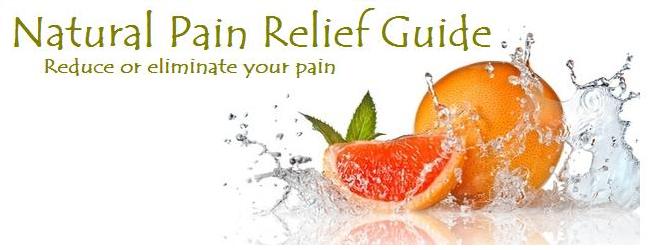

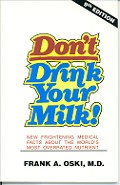
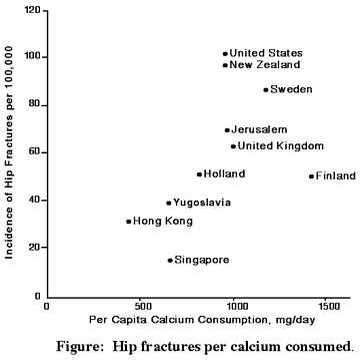
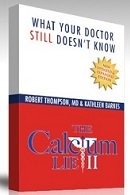

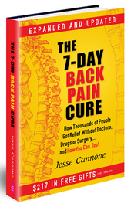



New! Comments
Have your say about what you just read! Leave me a comment in the box below.